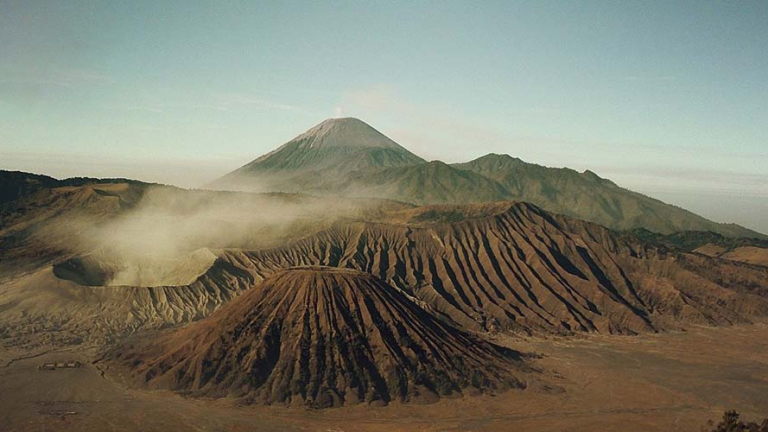Suche:
- # Artistry
- # Biology
- # Chemistry
- # Ecological
- # Economy
- # English
- # Foreign Language
- # Geography
- # German
- # Health
- # History
- # Informatik
- # Latin
- # Mathematics
- # Media Education
- # Music
- # Physics
- # Politics / Civics
- # Preschool
- # Primary School
- # Religion
- # Society
- # Sports
- # Technology
- # Training of Teachers
- # Vocational Education
London
This DVD offers a clearly structured overview of the bustling city on the Thames. The students are to realise that the geographical situation of London in the centre of the island state is decisive both for its climate and its special historical and political significance within Europe. Today London has become one of the most expensive cities of the world and plays a major role in international banking. The DVD presents the metropolis in all its facets. Impressi- ve pictures illustrate the cultural highlights of the city on the Thames, views of the colourful street life allow the students to participate in London’s everyday life. The city’s historical monuments, multicultural Soho, Hyde Park or the tube – this DVD invites us on an exciting tour through the lively metropolis. The DVD is divided into six didactic units which can be individually accessed and worked on via the DVD menu. Furthermore, the menu offers additional pictures and text material.
Learn moreCapitals of Central Europe I
This DVD presents the German-speaking capitals of Central Europe, Berlin, Bern, Vaduz and Vienna. By way of introduction, the pupils learn about the natural and climatic boundaries of the Central European region and which countries it encompasses. Based on this, the film first focuses on the topographic situation of the respective capital of the countries of Germany, Switzerland, Austria and Liechtenstein, and the history of the cities’ foundation is briefly outlined. To illustrate their function as capitals, the government buildings in Berlin, Bern, Vaduz and Vienna are described but the DVD also goes into the respective infrastructural and economic particularities. Impressive pictures and the accompanying material give a lasting account of the growth of the metropolis of Vienna thanks to its favourable geographic situation at the Danube trade route and the Habsburg dynasty. The traces of Berlin’s division into West Berlin and East Berlin are documented, Bern is shown in its special role as federal capital of Switzerland and capital of the canton of Bern, and Vaduz is introduced as small capital of international repute as a financial centre.
Learn moreCapitals of Central Europe II
This DVD presents the capitals of eastern Central Europe, Bratislava, Budapest, Prague and Warsaw. By way of intro- duction, the pupils learn about the natural and climatic bound- aries of the Central European region and which countries it encompasses. Based on this, the film first focuses on the topographic situation of the respective capital of the countries of Slovakia, Hungary, the Czech Republic and Poland and the development of the cities is briefly outlined. Imposing buildings, historical monuments, architectural characteristics, magnificent operas and theatres, but also multi-cultural life in the streets and living traditions are witnesses to the rich cul- ture and artistic atmosphere of these capitals in the heart of Europe. Impressive pictures capture the uniqueness of each one of the capitals and illustrate their characters. Here, the respective geographic location of the capitals is linked to the history of their foundation. The pupils can follow the respective city development, learn about important sights, may compare the economic power and the infrastructures of the cities and will, step by step, obtain a complete picture of the diversity of the unified Europe.
Learn moreCapitals of Northern Europe
This DVD presents the five capitals of Northern Europe: Helsinki, Copenhagen, Oslo, Reykjavik and Stockholm. The pupils learn about the topographic situation of the capitals in Europe and in their respective country. The history of the cities and their development are outlined, as well as their particularities. This encompasses imposing buildings, famous sights, historical monuments, architectural characteristics and also the cultural life. The pupils are informed on the economic relevance of the capitals within the respective country as well as about their infrastructure and traffic and transport connec- tions to other countries. Impressive pictures capture the uniqueness of each one of the capitals and illustrate their characters. The facts of the film are complemented by extensive accompanying materi- al, which deepens the pupil’s understanding. Here, not only those aspects of the cities already mentioned are discussed but also the topographic, climatic and political mapping of their respective countries (Finland, Denmark, Norway, Iceland and Sweden). The pupils learn to assign the capitals to their respective countries and to characterise them as well as to compare and assess them.
Learn moreBavaria
The free state of Bavaria is one of the most diverse states of the Federal Republic of Germany. Amidst the Alps with the Alpine Foothills and the Frankenwald and Lake Constance in the southwest, there are various regions that considerably differ from each other with regard to landscape as well as to economic basis. From a historical point of view, too, today’s Bavaria has evolved from individual states like the Duchy of Bavaria and several dioceses and free imperial cities like, for instance, Freising and Augsburg. Particularly interesting is the rise of the former agrarian state, which was to a large extent structurally weak, to one of the leading federal states in terms of economy and technology in the period from World War II until today. With its culture and numerous cultural treasures, Bavaria attracts tourists from all over the world, which contri- buted to the emergence of a service-oriented economy. Due to the modified, modular regional-studies approach, the DVD is suitable from the 5th to the 10th year of school.
Learn moreSaarland
One of the small States of the Federal Republic of Germany is also represented in this film series. A turbulent history in a border situation between two power blocs, coal and steel, structural change, services and nanotechnology. Join us on a short trip through Saarland!
Learn moreGeologic Activities
The formation of our earth began according to today's knowledge from a huge cloud of dust and gases about 4.6 billion years ago.
Learn moreThe Wounded Planet
Over millions of years the development of the Earth was determined by nature. Today, man determines the development of nature but not to its advantage.
Learn moreIndia
India – in official language also called Republic of India, is a state in South Asia. Its national territory has an extension of about 3,287,263 km2, and is inhabited by 1.3 billion people. In the north the country reaches up to the Himalayas and the south is enclosed by the Indian Ocean. The southern tip of India is near the island state of Sri Lanka. To the northwest it borders Pakistan. To the north it borders China, the Chinese Autonomous Region of Tibet respectively, Nepal and Bhutan, to the east Myanmar and Bangladesh. In addition, the Adaman and Nicobar Islands in the Gulf of Bengal and the Laccadives in the Arabian Sea are part of India as well.
Learn moreGreen Tourism
Whereas a few decades ago many countries on this earth could be reached under the most difficult conditions only, an unlimited number of travel destinations all over the world are open to people today. Package tours, long-haul flights even to the most distant regions, are available to almost anyone willing to travel.
Learn moreTibet
Tibet, the so-called »Roof of the World«, is a vast highland in Central Asia. Hidden behind huge mountain ranges, the highest plateau of earth together with its inhabitants, the Tibetans, is little known to the rest of the world. The »country of the snow lion«, as the historical Tibet is also called, is comprised of the three big provinces Ü-Tsang, Kham and Amdo and several smaller ones encompassing an area of 2.5 million square kilometres. China, however, incorporated all of Amdo and large parts of Kham into the adjacent Chinese provinces. The remaining area was given the name »Tibet Autonomous Region«.
Learn moreSchool Caching
A treasure hunt in nature… and with GPS devices! Geocaching has been a real trend with lovers of nature for long and now more and more schools discover that pupils can be encouraged to head out into nature and, moreover, that learning content can be communicated creatively in this way. The pupils get the coordinates for the next station only by solving a maths problem, for example, or the various answer options are linked to coordinates. In addition, geocaching promotes thinking and working in groups and can be used to improve classroom community. In this DVD, a school class demonstrates us a school caching organised by their teachers in the Swabian Alps, the development of an educational cache and how GPS works. With the extensive accompanying material the didactic DVD is ideally suited for use in the classroom.
Learn more


























